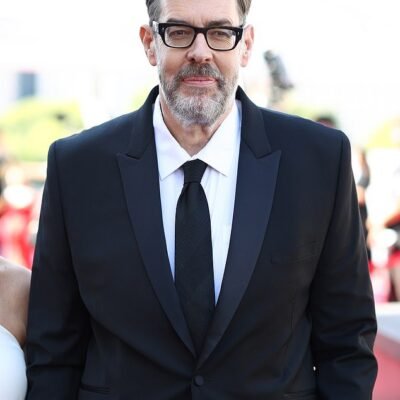Mothers and their children misunderstand one another. This is the truth that haunts the families at the heart of Real Americans, novelist Rachel Khong’s ambitious multigenerational saga of money, migration, dreams, secrets and the lure of scientific progress.
Khong’s acclaimed debut novel Goodbye Vitamin followed a 30-year-old woman simultaneously confronted with a cruel break-up and a parent’s Alzheimer’s diagnosis. In Real Americans, Khong widens her lens, tracking the fortunes of a family across three generations.
The book opens in New York in 1999. Y2K references abound: CDs played on a Discman, the soon-to-open London Eye, Enron and Alan Greenspan in the news. Lily, the self-consciously aimless daughter of industrious Chinese scientists, is an unpaid intern at a magazine. She has been waiting for life to suggest “some clear way forward” and finds an answer at the company holiday party, where a “distractingly hot” stranger gifts her the 40-inch flat screen TV he’s just won in a raffle. (“I’ve got a TV. I don’t actually know what I’d do with this,” he says.)
Lily is besotted with Matthew — specifically, with what she sees as his luck. Or is it just his money? Throughout their whirlwind courtship, her gaze remains fixed on the apparent ease his investment banking job brings: the impulsive trip to Paris, the gifts of perfume and an expensive, perfectly fitting dress, the immaculately decorated West Village condo “that seemed always, by some magical force, to be the right temperature.”

All this is just a prelude to the novel’s real action. Matthew has hidden from Lily quite how unfathomably rich he is. He’s the son of pharmaceutical scion Otto Maier and in line to take over the family business — a reality he wanted to protect her from, he says. There are other complications. Unbeknown to them both, decades earlier Lily’s parents May and Charles had worked for the epigenetic research institute funded by the Maiers, using Lily as a guinea pig for experimental gene-editing therapy. This is the dark secret upon which the book’s plot uneasily rests as it moves forward into the adolescence of Lily and Matthew’s blonde-hair, blue-eyed half-Chinese son Nick, and then back in time to Lily’s mother’s early days in China.
As Nick grows from being an insecure teenager raised on an island in the Pacific Northwest into a successful genetic researcher in New York, his collegiate growing pains and attempts to make sense of his origins are depicted with sensitivity. But the best sections of Real Americans are those set far from America, in the China of May’s childhood and early womanhood. In some ways, May (or Mei, as she was known as a girl) is cast as the novel’s villain. It’s her bold choices that will come to define Lily and Nick’s lives in confounding ways. Still, somehow her chapters feel the most free even as Mao’s Great Leap Forward disrupts a girlhood of lake swims and lab work. The weight of history forces May to face the full measure of her own ambition, and decide what she is willing to sacrifice for it.
“An American expression that had always been strange to me was ‘build a life,’” May regretfully reflects later. “My life had not been built. It wasn’t a piece-by-piece assembly, following a blueprint. Nothing fit together. It wasn’t a structure but a heap.” In the end the pieces of Real Americans — as carefully constructed as they are — don’t quite fit either. The family conspiracies and fateful coincidences designed to fuse the storylines together feel both overwrought and under-developed; the moments of real emotional insight and discovery can feel too slight.
What is it that parents can meaningfully gift their children — time and attention? Love? Money? Values? Great genes? What do dreams really cost? The book pulls at these questions with persistence. In the end, Real Americans sits uncomfortably between realism and something stranger and more supernatural. But then, so too do the burdens of parental love.
Real Americans by Rachel Khong Hutchinson Heinemann £16.99/Knopf $29, 416 pages
Join our online book group on Facebook at FT Books Café and subscribe to our podcast Life & Art wherever you listen




